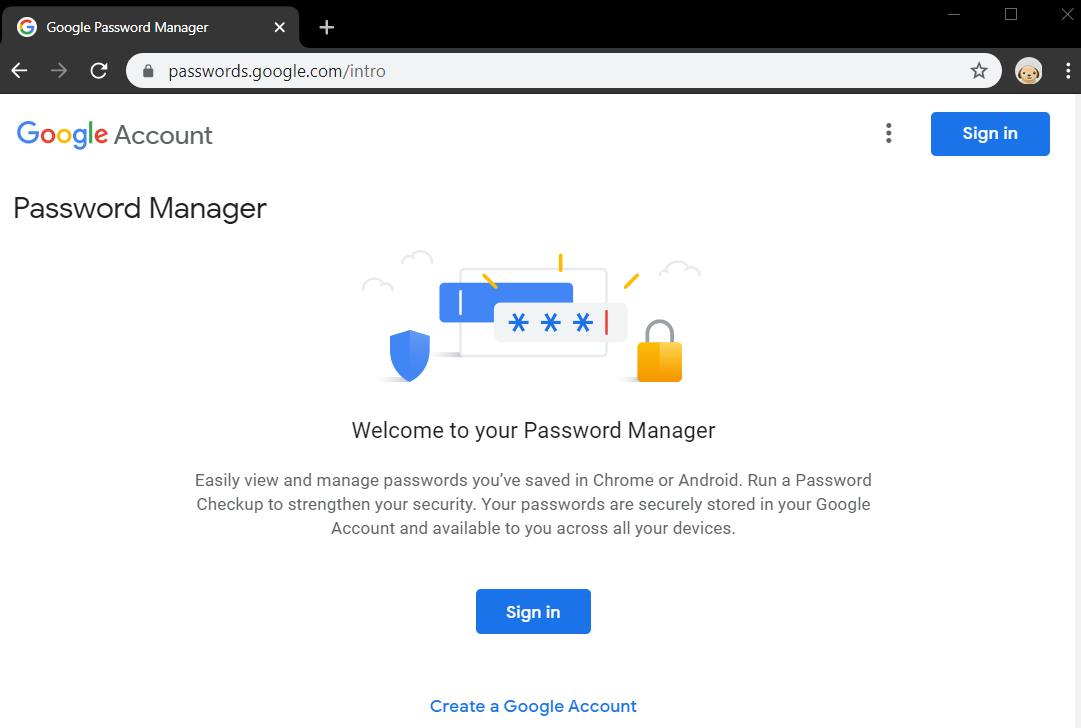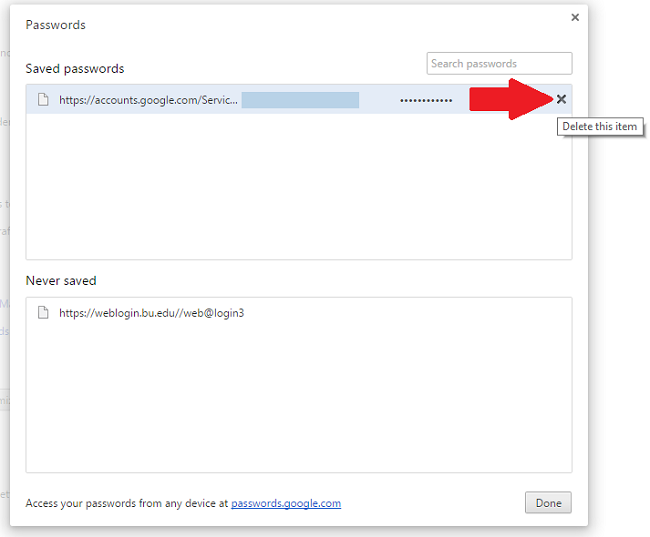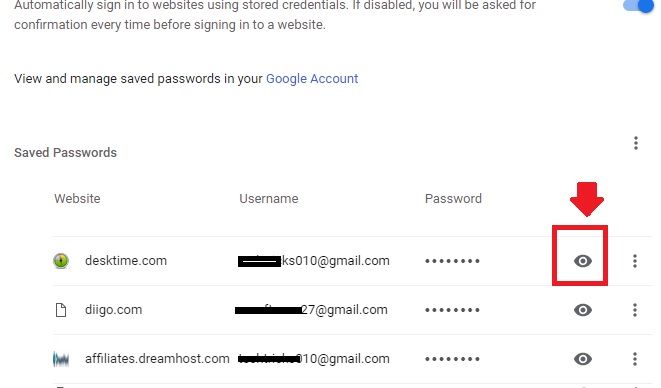
#GOOGLE CHROME SAVED PASSWORDS LIST PASSWORD#
Īdvice: To protect your privacy, you must not use the same password for all websites you access and always use strong and complicated passwords. Notice*: By doing this the next time you will try to access that site, Google Chrome should prompt you to “ Save the password” for that site. In the case that you want Chrome to store your password for any of this sites, delete it form the list by selecting it and pressing the “ X'” button that appears.*

Under this section you can view all the sites that Google Chrome has not stored a password for them. Once the Chrome browser is up and running, click on the three-dot menu located on the top right of the browser menu, then find Settings in the dropdown menu and click on that. Export from Chrome Select the menu button in the saved passwords section, and select Export passwords. Inside Chrome Password settings you also view the “ Never saved” section. Tip: If you press the “Show” button at the chosen website then you’ll be able to view the stored password for that site. After doing this, press “ Done” and continue working with your browser. Select the website that you don’t want Chrome to store your password for and press the remove button “ X” to remove it from the “ Saved passwords” list.Ĥb. Inside “ Passwords” options, look under “ Saved Passwords” section and:Ĥa. Scroll Down to find “ Passwords and forms” section and press “ Manage saved passwords”. At the end of “ Settings” window, find and press the “ Show Advanced Settings” option.ģ. Open Google Chrome and go to chrome menu and choose " Settings".Ģ. Google Password Manager now has a dedicated home in Chrome on desktop, making it easier to review all your saved online credentials or change your password settings.
#GOOGLE CHROME SAVED PASSWORDS LIST HOW TO#
If you want to remove stored usernames and passwords from Chrome, then use the steps bellow: How to remove Chrome Stored Passwordsġ. To view the saved passwords, visit A list of accounts with saved passwords can be viewed there. Access a dedicated space and shortcut on desktop. But if you share your computer with other users, you don’t want your information to be shared or viewed from others. Storing Passwords in websites you visit is a useful feature available in all current browsers.

Never for this site: By selecting this option, Chrome doesn’t store the password for the current website.

Under Save passwords section you can view the list of all website along with the username and password for which. Save Password: By selecting this option, Chrome stores your password for the current website so that the next time you access it you don’t have to enter your password again.ī. Step 4: A Passwords dialog box will pop out. To see a password for a particular entry, click the Eye icon next to it. Each entry includes the website name, your username, and an obscured password. On the Passwords screen, you’ll see a section labeled Saved Passwords. If you are using Google Chrome when you try to access a website site for first time using your credentials, Chrome asks you if you want to save or not your credentials for that website.Īt this time you have two (2) available options:Ī. On the Settings screen, scroll down to the Autofill section and click Passwords.


 0 kommentar(er)
0 kommentar(er)
